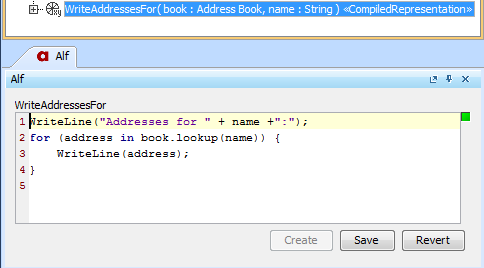

#Opaque action modelio manual
Despite some manual steps, the proposed workbench shows to be well suited to ease the complicated task of deploying a swarm of CPSs.Ĭyber-Physical Systems (CPS) find applications in a number of large-scale, safety-critical domains e.g. The results show that the performance of the swarm is proportional to its size. We measure the swarm performance in terms of area covered and victims rescued. Third, deployment on hardware to demonstrate the applicability. Second, detailed simulation to test the correctness of the results. First, abstract simulations for rapid prototyping. We evaluate the resulting swarm behaviors on three levels. As a proof-of-concept, we use the workbench to design a swarm of unmanned aerial vehicles (UAVs) and unmanned ground vehicles (UGVs) for a search and rescue (SAR) use case. The workbench combines existing and emerging tools to solve real-world CPS swarm problems. This formalized workflow guides the user from modeling, to code generation, to deployment, both in simulation and on CPS hardware platforms. We present the CPSwarm workbench that creates an automated design workflow to ease this process. Finally, we demonstrate the modeling technique by applying the swarm intelligence algorithm BEECLUST to the robotic platform Spiderino.Įngineering swarms of cyber-physical systems (CPSs) is a complex process. Furthermore, the two-level approach allows us to link the modeling of the CPS hardware with the modelling of the behavior of each CPS in a swarm.

This is done by extracting single actions from original swarm intelligence algorithms and assembling them in the activity diagrams. The individual actions allow the designer to customize existing and create new swarm intelligence algorithms. Therefore, we introduce a two-level hierarchy: The first level models the swarm intelligence algorithms as opaque blocks which are detailed in the second level by individual actions as activity diagrams.
#Opaque action modelio software
In this paper, we propose an approach to model the local behavior of individual CPSs using swarm intelligence algorithms from a software engineering perspective. Nevertheless, the design of such systems is still a hard problem. This has advantages such as adaptability, scalability, and robustness without relying on a central control. In such algorithms, individual CPSs follow simple rules that lead to an emergent behavior. Swarm intelligence algorithms are one approach to handle the increased complexity that comes with the high number of CPSs in a swarm. Swarms of cyber-physical systems (CPSs) have a high potential for innovative and successful applications.


 0 kommentar(er)
0 kommentar(er)
